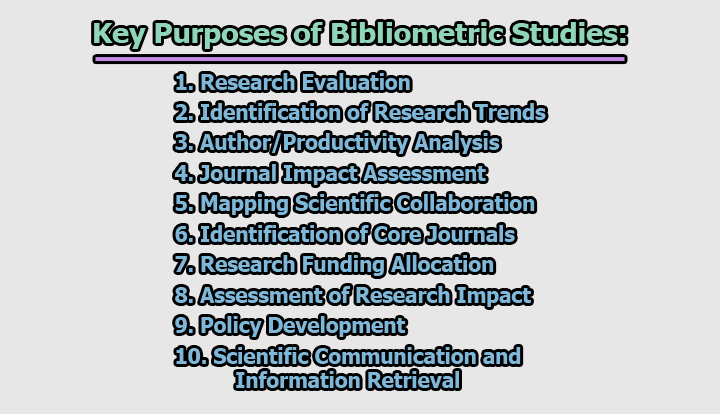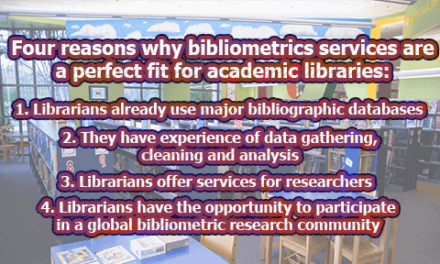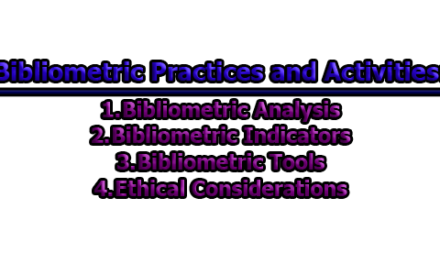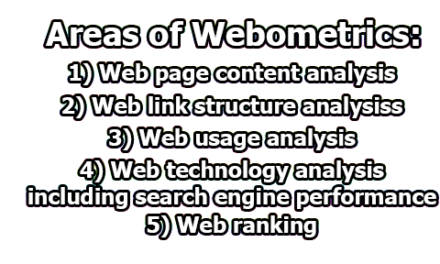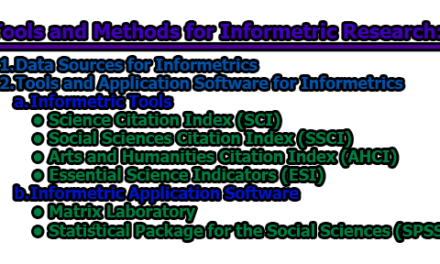Key Purposes of Bibliometric Studies:
Bibliometric studies have become indispensable tools in the realm of research and academia, providing quantitative insights into the dynamics of scholarly communication and the impact of scientific endeavors. Through the systematic analysis of publication and citation data, bibliometrics serve a myriad of purposes, influencing decisions ranging from research evaluation and funding allocation to identifying emerging trends and fostering international collaboration. In this article, we will explore key purposes of bibliometric studies, shedding light on their diverse applications in shaping the landscape of academic research and knowledge dissemination.
1. Research Evaluation: Bibliometric studies play a crucial role in the evaluation of research output for individuals, institutions, and countries. Researchers and academic institutions often use bibliometric indicators, such as citation counts and h-index, to assess the impact and quality of research publications. These metrics provide a quantitative measure of the influence of scholarly work, helping to identify researchers and institutions that have made significant contributions to their respective fields. This evaluation is particularly valuable for tenure decisions, grant applications, and institutional rankings.
2. Identification of Research Trends: Bibliometrics enables the identification and analysis of research trends over time. By examining citation patterns, co-citation networks, and keyword usage in academic publications, researchers can gain insights into the evolution of scientific fields. This information is valuable for staying current with emerging topics, understanding the trajectory of research in a particular area, and making informed decisions about future research directions.
3. Author/Productivity Analysis: Bibliometric analysis allows for the assessment of author productivity and impact. Researchers can evaluate the publication output of individual scholars, institutions, or even entire countries. Metrics such as the number of publications, citation counts, and the h-index are used to quantify the influence of researchers. This analysis is essential for identifying key contributors to a field, acknowledging scholarly achievements, and recognizing individuals or entities for their research contributions.
4. Journal Impact Assessment: Journals serve as important channels for disseminating research findings, and bibliometrics are employed to assess their impact and influence. Citation metrics, such as the journal impact factor, help researchers and institutions evaluate the prestige and reach of academic journals. This assessment aids authors in selecting appropriate outlets for their work and informs libraries and institutions in making decisions about journal subscriptions and resource allocations.
5. Mapping Scientific Collaboration: Bibliometrics provide a means to map and analyze scientific collaboration patterns. By examining co-authorship networks and international collaboration trends, researchers can understand the dynamics of collaboration within and between disciplines. This information is valuable for identifying influential research groups, fostering interdisciplinary collaboration, and promoting a global perspective in scientific endeavors. Mapping collaboration patterns also aids in assessing the impact of collaborative efforts on research productivity and innovation.
6. Identification of Core Journals: Bibliometric analyses help researchers and institutions identify core journals within specific fields. By examining citation patterns and journal impact factors, scholars can determine which journals are central to a particular discipline or research area. This information is crucial for researchers when deciding where to submit their work for publication, as publishing in reputable and widely recognized journals enhances the visibility and impact of their research.
7. Research Funding Allocation: Bibliometrics play a role in the allocation of research funding by providing quantitative measures of research impact and productivity. Funding agencies use bibliometric indicators to assess the track record and potential impact of researchers and research proposals. This information aids in making informed decisions about distributing resources, ensuring that funds are directed toward research endeavors with a high likelihood of making significant contributions to the scientific community.
8. Assessment of Research Impact: Bibliometric studies contribute to the assessment of research impact by analyzing citation counts, citation networks, and other metrics. Researchers and institutions can gauge the influence and reach of specific studies, publications, or bodies of work. This assessment is valuable for understanding the broader impact of research beyond traditional academic circles, including its relevance to industry, policy-making, and society at large.
9. Policy Development: Policymakers and governmental bodies utilize bibliometrics to inform evidence-based policy development in science and education. By analyzing trends in research output, collaboration, and impact, policymakers can make informed decisions about allocating resources, setting research priorities, and promoting initiatives that align with the evolving landscape of scientific knowledge. Bibliometric data provides a quantitative foundation for policy decisions, enhancing the effectiveness and efficiency of science-related policies.
10. Scientific Communication and Information Retrieval: Bibliometric analyses contribute to effective scientific communication and information retrieval. Researchers use citation metrics to identify influential papers, track the development of specific topics, and locate key contributors to a field. This aids in literature reviews, facilitates interdisciplinary collaboration, and enhances the efficiency of information retrieval. Additionally, bibliometrics support the development of citation indices and databases, making it easier for researchers to access relevant and impactful scholarly work.
In conclusion, bibliometric studies stand as pillars in the edifice of scholarly inquiry, offering valuable perspectives on the productivity, impact, and trends within the academic landscape. From guiding researchers in selecting journals for publication to aiding policymakers in evidence-based decision-making, bibliometrics contribute significantly to the advancement of science. As the research ecosystem continues to evolve, the continued refinement and utilization of bibliometric methodologies promise to play an increasingly vital role in navigating the complexities of the modern scientific enterprise.
References:
- Garfield, E. (1955). Citation indexes for science: A new dimension in documentation through association of ideas. Science, 122(3159), 108-111.
- Hirsch, J. E. (2005). An index to quantify an individual’s scientific research output. Proceedings of the National Academy of Sciences, 102(46), 16569-16572.
- Narin, F. (1976). Evaluative bibliometrics: The use of publication and citation analysis in the evaluation of scientific activity. Cherry Hill, NJ: Computer Horizons Inc.
- Van Raan, A. F. (2004). Sleeping Beauties in science. Scientometrics, 59(3), 461-466.
- Egghe, L. (2006). Theory and practise of the g-index. Scientometrics, 69(1), 131-152.
- Garfield, E. (1972). Citation analysis as a tool in journal evaluation. Science, 178(4060), 471-479.
- Garfield, E. (2006). The history and meaning of the journal impact factor. JAMA, 295(1), 90-93.
- Wagner, C. S., & Leydesdorff, L. (2005). Network structure, self-organization, and the growth of international collaboration in science. Research Policy, 34(10), 1608-1618.
- Glänzel, W., & Schubert, A. (2004). Analysing scientific networks through co-authorship. In Handbook of quantitative science and technology research (pp. 257-276). Springer.
- Moed, H. F. (2005). Citation analysis in research evaluation. Dordrecht: Springer.
- Vanclay, J. K. (2007). On the robustness of journal rankings by bibliometric methods. Journal of the American Society for Information Science and Technology, 58(10), 1547-1554.
- Narin, F., & Olivastro, D. (1988). Status report: Linkage between technology and science. Research Policy, 17(6), 335-347.
- Bornmann, L., & Marx, W. (2014). How to evaluate individual researchers working in the natural and life sciences meaningfully? A proposal of methods based on percentiles of citations. Scientometrics, 98(1), 487-509.
- Adams, J. (2013). Collaborations: The rise of research networks. Nature, 497(7451), 557-560.
- Leydesdorff, L., & Vaughan, L. (2006). Co‐citation analysis of the scientific literature: A new methodological framework. ISSI Newsletter, 2(1), 3-8.

Former Student at Rajshahi University

